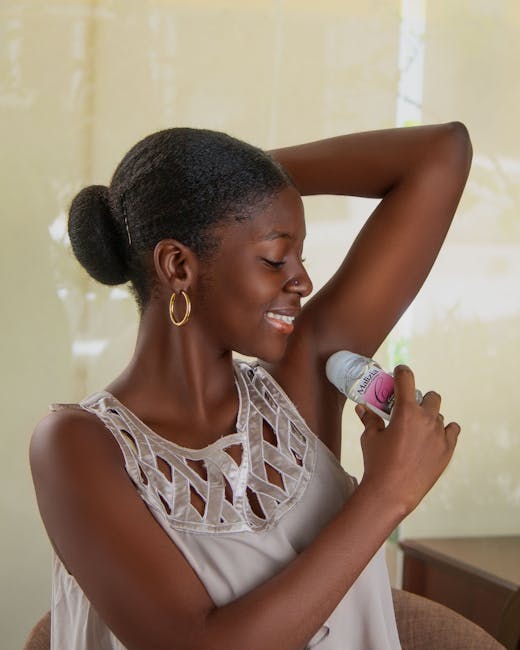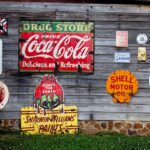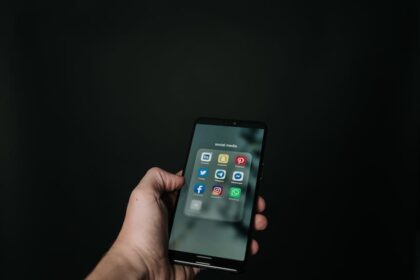FunnelFocus: Guiding Users Through Instagram Ads
Successful Instagram advertising transcends mere ad placement; it demands a meticulous, user-centric approach rooted in the principles of a marketing funnel. This “FunnelFocus” strategy is about methodically guiding potential customers through a series of touchpoints, transforming fleeting interest into loyal advocacy. It’s a structured journey, from initial brand exposure to final conversion and beyond, optimized at every stage specifically for Instagram’s dynamic, visual-first environment. Neglecting this holistic view often leads to wasted ad spend and missed opportunities. Understanding and implementing a robust funnel on Instagram means aligning creative, targeting, bidding, and measurement with distinct user mindsets at each stage, ensuring a seamless and compelling user experience that drives measurable results.
I. The Strategic Blueprint: Deconstructing the Instagram Ad Funnel
The core of FunnelFocus on Instagram lies in segmenting the user journey into distinct phases, mirroring traditional marketing funnel stages but adapting them to Instagram’s unique characteristics. Each stage requires a tailored strategy, from audience definition to creative execution and performance measurement.
A. Stage 1: Awareness – Igniting Initial Interest (Top of Funnel – ToFu)
At the top of the funnel, the objective is broad reach and initial brand exposure. Users at this stage are typically unaware of your brand, product, or service, or perhaps even the problem your solution addresses. The goal is to capture attention and spark curiosity within a highly competitive visual landscape.
- Objectives: Brand Awareness, Reach, Video Views, Engagement. These objectives are designed to maximize impressions and initial interactions without immediate pressure for conversion. Instagram’s algorithm favors engaging content, so high-quality, thumb-stopping visuals are paramount.
- Audience Targeting: Broad yet relevant.
- Interests: Target broad interest categories related to your product or industry (e.g., “fashion,” “tech gadgets,” “healthy eating”). Avoid overly niche interests that might limit reach.
- Demographics: Basic age, gender, location, and language filters.
- Behaviors: Lever age Instagram’s behavioral targeting options, such as “Engaged Shoppers” or “Digital Activities,” to reach individuals more likely to interact with brands.
- Lookalike Audiences (Broad Seed): Create 1%-3% lookalike audiences based on broad customer lists (e.g., all website visitors, email subscribers) or even broad engagers with your Instagram profile. This leverages data to find new users with similar characteristics to your existing audience base, expanding reach intelligently.
- Creative Strategy: The Visual Hook.
- High-Quality Visuals: Instagram is visually driven. Images and videos must be professional, aesthetically pleasing, and immediately convey brand identity. Think “scroll-stopping.”
- Storytelling: Use compelling narratives that resonate with potential customers. This could be a brand origin story, a glimpse behind the scenes, or a vivid portrayal of a lifestyle aspiration.
- Problem-Solution Introduction: Subtly introduce a common pain point and hint at how your brand can alleviate it, without explicitly selling. Focus on benefits, not features.
- Video Ads: Highly effective for awareness. Short (15-30 seconds), engaging videos that quickly convey a message or emotion. Think about the first 3 seconds – they are crucial for hook. Use captions, as many users watch without sound.
- Instagram Stories & Reels Ads: Native, full-screen, immersive formats. Leverage their ephemeral nature for authentic, raw content. Use polls, quizzes, or countdown stickers to encourage initial interaction.
- Carousel Ads: Showcase multiple facets of your brand or a range of products, telling a sequential story.
- Ad Copy: Keep it concise, engaging, and benefit-oriented. Focus on capturing attention and intriguing the user. A strong headline is key. Avoid hard selling; aim for curiosity. Use relevant hashtags to increase discoverability, but don’t overstuff.
- Key Metrics & Measurement:
- Reach: The number of unique accounts that saw your ad.
- Impressions: The total number of times your ad was displayed.
- CPM (Cost Per Mille/Thousand Impressions): The cost to show your ad 1,000 times. A lower CPM indicates efficient reach.
- Video Views: The number of times your video was played (e.g., 3-second or 10-second views).
- Engagement Rate: Likes, comments, shares, saves per impression or reach. While not the primary goal, high engagement signals that your content resonates.
- Brand Lift Studies: For larger campaigns, these measure the direct impact on brand recall, awareness, and favorability.
- Budget Allocation: Typically, a significant portion of the budget is allocated here to build a substantial audience pool for subsequent funnel stages. However, it’s an investment in future conversions, not immediate ROI.
B. Stage 2: Consideration – Nurturing Interest and Engagement (Middle of Funnel – MoFu)
Once users are aware of your brand, the next step is to deepen their engagement and encourage them to actively consider your offering. This stage is about providing more information, addressing potential questions, and building trust.
- Objectives: Traffic (Link Clicks), Lead Generation, Engagement (Post Engagement), App Installs, Catalog Sales (for specific product views).
- Audience Targeting: Warmer Audiences.
- Retargeting Engagers: Custom audiences of users who have interacted with your ToFu ads (e.g., watched 75%+ of a video ad, liked or commented on a post, visited your Instagram profile).
- Website Visitors (Specific Pages): Users who visited your website but didn’t convert (e.g., blog readers, product page viewers, but not cart abandoners yet). Lever age the Facebook Pixel to track these behaviors.
- Email List Uploads (Non-Purchasers): Upload customer lists to create custom audiences of users who are in your CRM but haven’t purchased yet.
- Lookalike Audiences (More Refined Seed): 1%-2% lookalikes based on higher-intent actions from ToFu (e.g., video completers, engaged Instagram followers).
- Creative Strategy: Informative & Engaging.
- Highlight Benefits & Features: Go deeper than awareness ads. Showcase specific benefits and unique selling propositions. Use bullet points or overlay text for clarity.
- Problem/Solution Deep Dive: Elaborate on the problem you solve and present your product/service as the ideal solution. Use relatable scenarios.
- Social Proof: Integrate testimonials, positive reviews, user-generated content (UGC), or endorsements from influencers. This builds credibility and trust.
- Demonstrations & How-To Videos: Show your product in action. If it’s a service, demonstrate its utility or walk through the process. Short tutorials or explainers work well.
- Call-to-Action (Soft): Encourage clicks to learn more, visit a specific product page, download a guide, or sign up for a newsletter. Examples: “Learn More,” “Shop Now” (leading to category page), “Download,” “Sign Up.”
- Lead Generation Ads: Use Instagram’s native lead forms to capture information directly within the app, reducing friction. Customize questions to pre-qualify leads.
- Dynamic Creative Optimization (DCO): Test multiple combinations of headlines, primary text, images, and videos. Instagram’s system will automatically deliver the best-performing combinations to your audience.
- Key Metrics & Measurement:
- CTR (Click-Through Rate): Percentage of people who clicked on your ad after seeing it. A higher CTR indicates better ad relevance and appeal.
- CPC (Cost Per Click): The average cost for each click on your ad.
- Landing Page Views: Confirms users are not just clicking but also successfully loading your destination page.
- Cost Per Lead (CPL): If running lead generation campaigns.
- Engagement Metrics: Comments, shares, saves – indicating deeper interest.
- Time on Site/Page Views (Post-Click): Tracked via Google Analytics or similar, to understand post-click engagement on your landing pages.
- Budget Allocation: This stage often requires a significant budget, as it’s where you actively nurture leads and refine your audience before the final conversion push. The cost per action here will typically be higher than awareness but lower than conversion.
C. Stage 3: Conversion – Driving Desired Actions (Bottom of Funnel – BoFu)
This is the decisive stage where interested prospects are prompted to take a specific, high-value action, such as making a purchase, signing up for a service, or booking an appointment. The focus is on minimizing friction and maximizing direct response.
- Objectives: Conversions (Purchases, Sign-ups, Subscriptions), Catalog Sales (Specific Product), Store Traffic.
- Audience Targeting: High-Intent Prospects.
- Retargeting Cart Abandoners: Users who added items to their cart but didn’t complete the purchase. This is often the highest-ROI audience.
- Product Page Viewers (Non-Purchasers): Users who viewed specific product pages multiple times but didn’t convert.
- Website Visitors (High Engagement): Users who spent significant time on your site or visited key conversion-oriented pages.
- Lead Nurturing (from MoFu): Audiences who submitted a lead form or downloaded content but haven’t converted to a customer.
- Customer Match (Lapsed Customers): Uploading customer lists to retarget those who haven’t purchased in a while with win-back offers.
- Lookalike Audiences (Purchase-Based Seed): Create 1% lookalikes based on your existing customer base. While these are cold audiences, they are highly qualified and can be effective for scaling if your existing customer base is robust.
- Creative Strategy: Direct & Persuasive.
- Strong Call-to-Action (Hard): Clear, direct, and urgent CTAs. Examples: “Buy Now,” “Shop Now,” “Complete Purchase,” “Get Offer,” “Book Now,” “Subscribe.”
- Urgency & Scarcity: Limited-time offers, countdown timers, stock alerts. “Last Chance,” “Ends Soon.”
- Exclusive Offers/Discounts: Special promotions for these highly qualified leads (e.g., “10% off your first order,” “Free Shipping”).
- Reinforce Value Proposition: Briefly reiterate the key benefits and how the product solves their problem, removing any lingering doubt.
- Risk Reversal: Highlight guarantees, free returns, secure checkout, or customer support availability to alleviate purchase anxiety.
- High-Quality Product Shots/Videos: Showcase the product clearly and attractively. For services, use visuals that evoke the desired outcome.
- Dynamic Product Ads (DPA): Crucial for e-commerce. Automatically show users products they’ve viewed on your website (or similar products) in a personalized ad. DPAs are incredibly effective for retargeting.
- Customer Testimonials/Reviews (Specific to Product): Show reviews directly related to the product or service being promoted.
- Minimalist Design: Reduce clutter to keep the focus squarely on the product and the CTA.
- Key Metrics & Measurement:
- Conversions: Number of completed purchases, sign-ups, etc.
- Conversion Rate: Percentage of clicks that resulted in a conversion.
- CPA (Cost Per Acquisition/Action): The average cost to achieve a conversion. This is a critical ROI metric.
- ROAS (Return On Ad Spend): Total revenue generated from ads divided by ad spend. The ultimate measure of campaign profitability.
- Purchase Value/Average Order Value (AOV): To understand the quality of conversions.
- Checkout Completion Rate: For e-commerce, tracking how many users initiated checkout and how many completed it.
- Budget Allocation: This stage often has a lower overall budget compared to Awareness or Consideration, but the CPA is usually higher, reflecting the value of the conversion. The goal is to maximize ROAS by efficiently converting the nurtured audience.
D. Stage 4: Retention & Advocacy – Cultivating Long-Term Value (Post-Conversion)
The funnel doesn’t end with a sale. FunnelFocus extends beyond initial conversion to cultivate customer loyalty, encourage repeat purchases, and transform satisfied customers into brand advocates. This is often overlooked but critical for long-term business growth and sustainable ROAS.
- Objectives: Repeat Purchases, Customer Loyalty, Referrals, Brand Advocacy, Customer Feedback.
- Audience Targeting: Existing Customers.
- Purchasers (by product category/value): Segment customers based on what they bought or how much they spent.
- Lapsed Customers: Identify customers who haven’t purchased in a specific timeframe.
- High-Value Customers: Focus on your most profitable customers for exclusive offers.
- Creative Strategy: Value-Added & Community-Focused.
- Exclusive Offers: Discounts or early access to new products for loyal customers.
- Cross-Selling/Up-Selling: Recommend complementary products or premium versions based on past purchases.
- Loyalty Program Promotion: Encourage sign-ups or remind customers of their rewards.
- User-Generated Content (UGC) Requests: Ask customers to share their experiences with your product, fostering a sense of community and providing authentic social proof.
- Customer Support & Education: Offer tips, tutorials, or guides on how to get the most out of their purchase.
- Feedback Collection: Solicit reviews, testimonials, or survey responses.
- Community Building: Invite customers to private groups or events.
- “Thank You” Messages: Simple yet powerful ads expressing gratitude for their business.
- Key Metrics & Measurement:
- Customer Lifetime Value (CLTV): The total revenue expected from a customer throughout their relationship with your brand.
- Repeat Purchase Rate: Percentage of customers who make more than one purchase.
- Customer Retention Rate: Percentage of customers who remain active over time.
- Referral Rate: Number of new customers acquired through referrals.
- Reviews/Ratings: Quantity and quality of customer feedback.
- Net Promoter Score (NPS): Measures customer loyalty and willingness to recommend.
- Budget Allocation: This stage typically has a smaller, targeted budget but can yield incredibly high ROAS due to the lower cost of retaining existing customers versus acquiring new ones.
II. Pillars of FunnelFocus: Optimizing Every Element of Instagram Ads
Beyond defining the stages, successful FunnelFocus demands mastery of the underlying mechanisms and best practices that power Instagram advertising.
A. Precision Audience Targeting and Segmentation
Effective targeting is the bedrock of funnel efficiency. Instagram’s sophisticated targeting options allow advertisers to reach the right people at the right time with the right message.
- Detailed Demographics & Interests: Go beyond basic age and gender. Utilize detailed interests (e.g., “organic skincare,” “marathon running,” “luxury travel”) and behaviors (e.g., “small business owners,” “frequent international travelers”) to pinpoint your ideal audience for each funnel stage.
- Custom Audiences: These are critical for retargeting and funnel progression.
- Website Custom Audiences (WCA): Built from users who visited your website. Segment by specific pages visited, time spent on site, or actions taken (e.g., product view, add to cart, checkout initiated). This requires the Facebook Pixel or Conversions API.
- Customer List Custom Audiences: Upload your CRM data (email addresses, phone numbers) to reach existing customers or prospects from your database. This is powerful for cross-selling, up-selling, or nurturing leads.
- Engagement Custom Audiences: Create audiences from users who have interacted with your Instagram profile, Facebook page, videos, or lead forms. This is excellent for moving ToFu audiences to MoFu.
- Lookalike Audiences (LALs): Extend your reach by finding new people who resemble your best customers or most engaged audiences. The quality of your “seed” audience (e.g., purchasers, top 25% video viewers) directly impacts the effectiveness of your LALs. Experiment with different percentage sizes (1-10%) to balance reach and similarity.
- Exclusion Targeting: Crucial for funnel efficiency. Exclude audiences who have already completed a desired action (e.g., exclude purchasers from conversion campaigns, exclude existing customers from new customer acquisition campaigns). This prevents ad fatigue and wasted spend.
- Layering and Overlap Analysis: Combine different targeting parameters, but be mindful of audience size. Use Instagram Ads Manager’s “Audience Overlap” tool to ensure your different ad sets aren’t competing against each other.
B. Crafting Compelling Creative for Each Stage
Creative is the user’s first interaction with your brand, and on Instagram, visuals reign supreme. Each funnel stage requires specific creative nuances.
- Ad Formats & Placements:
- Image Ads: Best for direct, clear messaging. Use high-resolution, branded images.
- Video Ads: Essential for storytelling, demonstrations, and captivating attention. Shorter videos for ToFu, longer for MoFu, direct product focus for BoFu.
- Carousel Ads: Showcase multiple products, tell a sequential story, or highlight different features. Great for both MoFu (educating) and BoFu (product variety).
- Collection Ads: E-commerce focused, allowing users to browse products directly within the ad before clicking through to the website. Ideal for BoFu.
- Instagram Stories Ads: Full-screen, vertical, immersive. Leverage interactive elements like polls and quizzes for engagement. Authentic, raw content often performs well here.
- Instagram Reels Ads: Short-form, dynamic, highly engaging. Leverage trending audio and fast cuts. Excellent for ToFu awareness.
- Ad Copy Best Practices:
- Headline: The first thing users see. Make it attention-grabbing and relevant to the funnel stage.
- Primary Text: Provide context and build interest. Use emojis to break up text and add personality. For ToFu, keep it brief; for MoFu, provide more detail; for BoFu, focus on benefits and urgency.
- Call-to-Action (CTA): Match the CTA button (e.g., “Shop Now,” “Learn More,” “Sign Up”) to your funnel objective.
- Value Proposition: Clearly articulate what makes your offering unique and valuable.
- Social Proof: Incorporate reviews, testimonials, and user counts where appropriate.
- Visual Appeal & Brand Consistency: Maintain a consistent brand aesthetic across all ad creatives. Use high-quality photography and videography. Ensure your visuals are optimized for mobile consumption – clear, vibrant, and easy to understand on a small screen.
- A/B Testing Creative: Constantly test different visuals, ad copy variations, headlines, and CTAs. Even subtle changes can significantly impact performance. Use Instagram’s A/B test feature to run controlled experiments.
C. Optimizing Landing Pages for Conversion
The ad is only half the battle. The landing page is where the user’s journey continues and where conversions actually happen. A disjointed experience between the ad and the landing page will lead to high bounce rates and wasted ad spend.
- Message Match: The landing page must directly continue the promise or message made in the ad. If your ad promotes a specific product, the landing page should go directly to that product.
- Clear Value Proposition: Immediately convey the key benefit or solution the user will gain.
- Mobile Responsiveness: Crucial for Instagram, as most users browse on mobile. Ensure fast loading times, easy navigation, and clear calls to action on mobile devices.
- Frictionless User Experience (UX): Minimize steps to conversion. Reduce form fields, offer guest checkout, and ensure clear navigation.
- Trust Signals: Display security badges, customer reviews, testimonials, return policies, and contact information prominently.
- Strong Call to Action (CTA): Prominently placed, clear, and compelling CTA buttons. Use contrasting colors to make them stand out.
- A/B Testing Landing Pages: Test different layouts, headlines, CTAs, and trust signals on your landing pages to optimize conversion rates.
D. Instagram Pixel & Conversion API Implementation
Without proper tracking, FunnelFocus is impossible. The Facebook Pixel (and its server-side counterpart, the Conversions API) is the essential tool for measuring ad performance, optimizing campaigns, and building powerful custom audiences.
- Pixel Installation: Install the base pixel code on every page of your website.
- Standard Events: Configure standard events (e.g., PageView, ViewContent, AddToCart, InitiateCheckout, Purchase, Lead, CompleteRegistration) to track key user actions. These are crucial for optimizing campaigns for conversions.
- Custom Conversions: Define specific conversion events that are unique to your business (e.g., a specific button click, video watch threshold).
- Conversions API (CAPI): Implement CAPI in addition to or instead of the Pixel for more reliable data tracking, especially with increasing privacy restrictions and ad blockers. CAPI sends conversion data directly from your server to Facebook, improving data accuracy and potentially leading to better ad performance.
- Event Match Quality: Monitor and improve your Event Match Quality in Events Manager. Higher match quality means more accurate audience building and attribution.
- Attribution Modeling: Understand how Instagram ads contribute to conversions alongside other channels. While Instagram Ads Manager provides attribution data, integrate with a broader analytics solution (e.g., Google Analytics, dedicated attribution software) for a holistic view.
E. Strategic Budget Allocation & Bidding
Efficient budget management is paramount for maximizing ROAS across the funnel.
- Campaign Budget Optimization (CBO): Facebook’s recommended approach. Set a single budget at the campaign level, and the system automatically allocates it to the best-performing ad sets within that campaign based on your objective. This is highly effective for FunnelFocus, as it dynamically shifts spend towards the most efficient stages or audiences.
- Budget Distribution Across Funnel Stages: A common approach is to allocate a higher percentage to ToFu (for reach) and MoFu (for nurturing), and a smaller but highly targeted percentage to BoFu (for high-value conversions). The exact percentages depend on your business, audience size, and cost per action at each stage.
- Bidding Strategies:
- Lowest Cost (Default): Instagram aims to get you the most results for your budget. Good for initial testing and scaling.
- Cost Cap: Set a maximum average cost per result. This gives you more control over CPA but can limit scale if set too low. Useful for stabilizing BoFu campaigns.
- Bid Cap: Set a maximum bid for an auction. Provides the most control but requires expertise and can significantly limit delivery if not set correctly.
- Value Optimization: Optimize for the total value of conversions (e.g., maximize purchase value rather than just the number of purchases). Requires accurate value data from your pixel.
- Scaling Strategies:
- Horizontal Scaling: Expanding to new audiences, new geographies, or new creative variations while maintaining performance.
- Vertical Scaling: Increasing budget on existing, well-performing ad sets. Do this incrementally (e.g., 10-20% daily) to avoid disrupting performance.
- Pacing: Understand how Facebook spends your budget. Daily budget vs. lifetime budget impacts delivery speed.
F. Continuous A/B Testing and Iterative Optimization
FunnelFocus is not a static strategy; it’s a dynamic process of continuous improvement.
- Test Everything: Audiences, creatives (images, videos, copy, headlines, CTAs), offers, landing pages, bid strategies, and placements.
- One Variable at a Time: For clear insights, isolate one variable per test.
- Statistical Significance: Ensure your tests run long enough and gather enough data to determine statistically significant winners.
- Implement Learnings: Apply insights from your tests to optimize future campaigns. What works for ToFu might not work for BoFu.
- Ad Fatigue Management: Monitor frequency (how many times users see your ad). High frequency can lead to ad fatigue and declining performance. Rotate creatives and refresh audiences regularly. Use Instagram’s “frequency caps” where available.
G. Performance Measurement, Analytics, and Attribution
Accurate measurement provides the intelligence to refine your FunnelFocus strategy.
- Key Performance Indicators (KPIs) by Stage:
- Awareness: Reach, Impressions, CPM, Video Views (3s, 10s, ThruPlay).
- Consideration: CTR, CPC, Landing Page Views, Leads, CPL.
- Conversion: Conversions, CPA, ROAS, Purchase Value, Conversion Rate.
- Retention: CLTV, Repeat Purchase Rate, NPS.
- Instagram Ads Manager Reports: Leverage the detailed reporting features in Ads Manager. Customize columns to focus on your specific KPIs.
- Google Analytics Integration: Beyond Instagram Ads Manager, use Google Analytics to gain deeper insights into user behavior post-click on your website (e.g., bounce rate, time on site, pages per session, conversion paths). Set up UTM parameters for precise tracking.
- Attribution Models: Understand how credit is assigned to different touchpoints in the customer journey. Instagram defaults to a specific attribution window (e.g., 7-day click, 1-day view). Consider how this fits into your broader marketing mix (e.g., last-click, first-click, linear, time decay, position-based). Multi-touch attribution models provide a more holistic view of the funnel’s effectiveness.
- ROI Calculation: Regularly calculate your Return On Investment. It’s not just about spending less; it’s about generating more profit.
III. Advanced FunnelFocus Techniques on Instagram
To truly excel, FunnelFocus requires incorporating advanced strategies that enhance personalization, efficiency, and long-term value.
A. Dynamic Ads for Retargeting and Prospecting
Dynamic Ads are a game-changer for e-commerce and any business with a product catalog. They automatically show personalized ads to users based on their interactions with your website or app.
- Dynamic Product Ads (DPA) for Retargeting: The most common use. If a user views a product on your site but doesn’t buy, DPA shows them that exact product (or similar ones) on Instagram. This is incredibly effective for BoFu conversions.
- Dynamic Ads for Broad Audiences (DABA/Dynamic Prospecting): Instagram identifies users likely to be interested in your products, even if they haven’t visited your site before. It then dynamically populates ads with relevant products from your catalog. This can act as a bridge from ToFu to MoFu/BoFu for new users.
- Catalog Setup: Requires a well-structured product catalog in Facebook Commerce Manager, linked to your Instagram business profile and pixel.
B. Value-Based Lookalike Audiences
Beyond basic lookalikes, Value-Based Lookalikes allow you to find new users who resemble your highest-value customers.
- Seed Audience: Upload a customer list with purchase values (e.g., CLTV, total spend).
- Optimization: Instagram’s algorithm will prioritize finding users who are not just similar to your customers, but similar to your most profitable customers. This can significantly improve ROAS for acquisition campaigns.
C. Leveraging Instagram Shopping Features
Instagram has integrated e-commerce features that streamline the path to purchase, reducing friction for conversion-focused FunnelFocus.
- Shop Tab & Product Tags: Make your organic posts and Stories shoppable by tagging products. This allows users to discover products directly from your content.
- Checkout on Instagram: For select businesses, enables users to purchase products without leaving the Instagram app. This dramatically simplifies the BoFu conversion process.
- Product Launches: Announce and promote new products directly through Instagram’s native shopping tools.
- Live Shopping: Host live streams where you showcase products that viewers can purchase in real-time.
D. Seamless Cross-Channel Funnel View
While this article focuses on Instagram, a true FunnelFocus strategy considers how Instagram ads integrate with other marketing channels.
- Integrated Customer Journey: Understand how users move between Instagram, your website, email, search, and other platforms.
- Consistent Messaging: Ensure brand messaging and visual identity are consistent across all channels.
- Attribution Modeling: Use advanced attribution models that consider all touchpoints, not just Instagram, to understand the true ROI of your integrated funnel.
E. AI and Automation in Funnel Management
Leverage Instagram’s (Facebook’s) AI and automation features to optimize funnel performance at scale.
- Automated Rules: Set up rules to automatically adjust budgets, pause underperforming ads, or notify you of specific metrics (e.g., “If CPA > $X, pause ad set”).
- Dynamic Creative: As mentioned, DCO automatically tests and serves the best combinations of creative assets.
- Advantage+ Campaign (formerly Automated Ads): Facebook’s suite of AI-powered features designed to simplify campaign setup and improve performance by automating targeting, creative, and placement decisions.
F. Building Strong Brand Presence and Community
While ads drive initial funnel progression, a strong organic Instagram presence reinforces trust and builds long-term loyalty.
- Consistent Content Strategy: Regularly post engaging, high-quality organic content that aligns with your brand values.
- Community Engagement: Respond to comments, direct messages, and mentions. Foster a sense of community around your brand.
- User-Generated Content (UGC): Encourage and re-share UGC. This provides authentic social proof and strengthens customer bonds.
- Influencer Marketing: Collaborate with relevant Instagram influencers to extend your reach and build credibility at the Awareness and Consideration stages.
G. Ad Policies and Compliance
Adhering to Instagram’s advertising policies is non-negotiable for long-term FunnelFocus success. Violations can lead to ad account disabling, disrupting your entire funnel strategy.
- Prohibited Content: Understand what content is not allowed (e.g., illegal products/services, discriminatory practices, deceptive content).
- Restricted Content: Be aware of categories with specific regulations (e.g., alcohol, pharmaceuticals, financial services).
- Data Privacy: Comply with data privacy regulations (e.g., GDPR, CCPA). Ensure your Pixel and Conversions API implementation respects user consent.
- Transparency: Be transparent about your ads and your business practices.
Conclusion (Implicit)
Mastering FunnelFocus on Instagram is not just about running ads; it’s about orchestrating a sophisticated digital dialogue. By meticulously crafting campaigns for each stage of the user journey—from initial awareness to post-conversion loyalty—businesses can transform passive scrolling into active engagement and measurable conversions. This structured, data-driven approach, constantly refined through testing and powered by Instagram’s advanced targeting and creative tools, is the pathway to sustained growth and robust return on ad spend in the competitive landscape of social media advertising.










